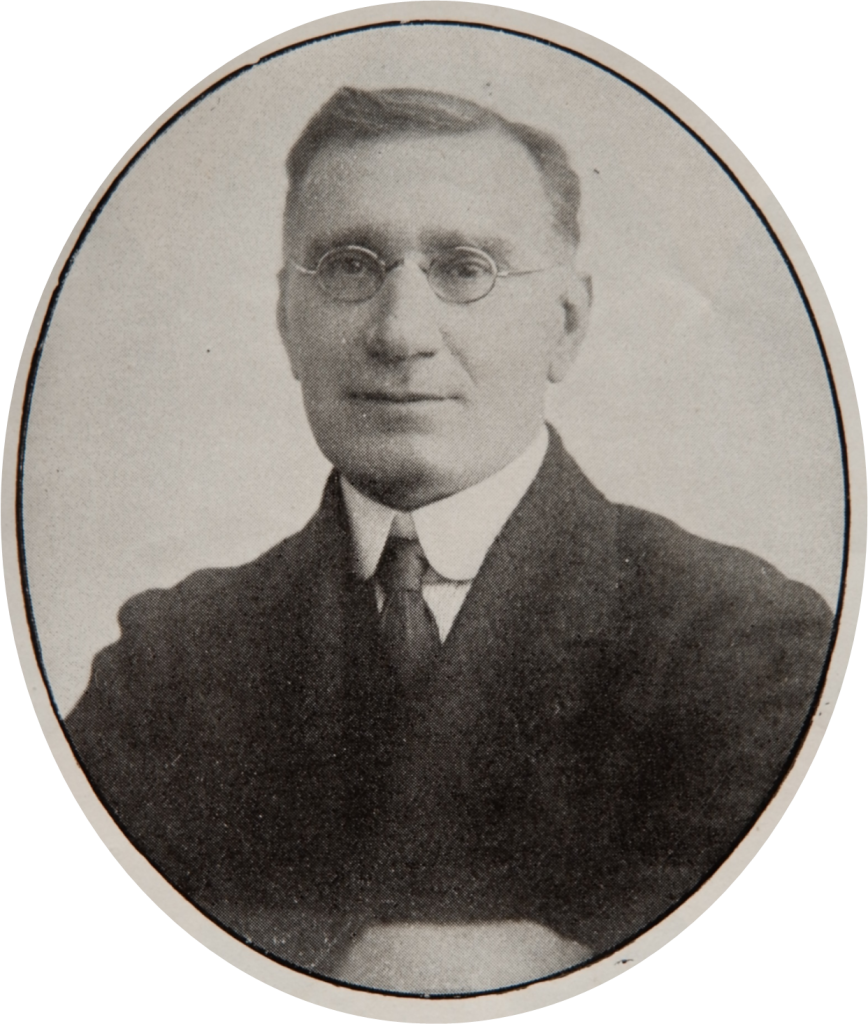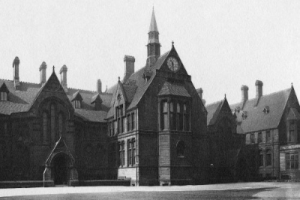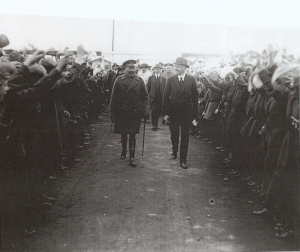
John Charles Burnham was responsible for keeping the greatest factory in the world operating smoothly which he accomplished every day he was there as the factory helped Britain win the war by producing the most cordite out of any factory in the whole world. When leaving the Factory Burnham left behind a meticulous record of his work in the form of a Factory Manuel which is now in the National Archives.
The picture above shows Burnham walking behind the two men, one being King George when he visited HM Factory Gretna.

Owens College, Manchester
J C Burnham studied at Owens College in Manchester from 1885 – 89 and graduated in 1888 with a Bachelor of science, in the first class and was elected an Associate of the College in the same year. In 1889 he became an assistant chemist under Kellner at Woolwich, Arsenal and while holding that position also acted for some years as Assistant Chemist to the Special Committee of Explosives, under the Chairmanship of Sir Frederick Abel. In 1894 he proceeded to India, where he was for five years as a chemist in charge of an experimental cordite factory at Kirkke, before he was appointed manager at the Government of India Explosives factory, Nilgiris. His advice was sought by the government on many occasions, and his services were recognised by the award of the C.S.I. In 1915 he was loaned to the Ministry of Munitions and became Director of the Board of Management and Superintendent at HM Factory Gretna, a post which he held until 1921. In the following year he was appointed General Works Manager of British Dyestuffs Corporation, Manchester and retired in 1924.
This is one of the factories which Burnham worked in before being moved to HM Factory Gretna



